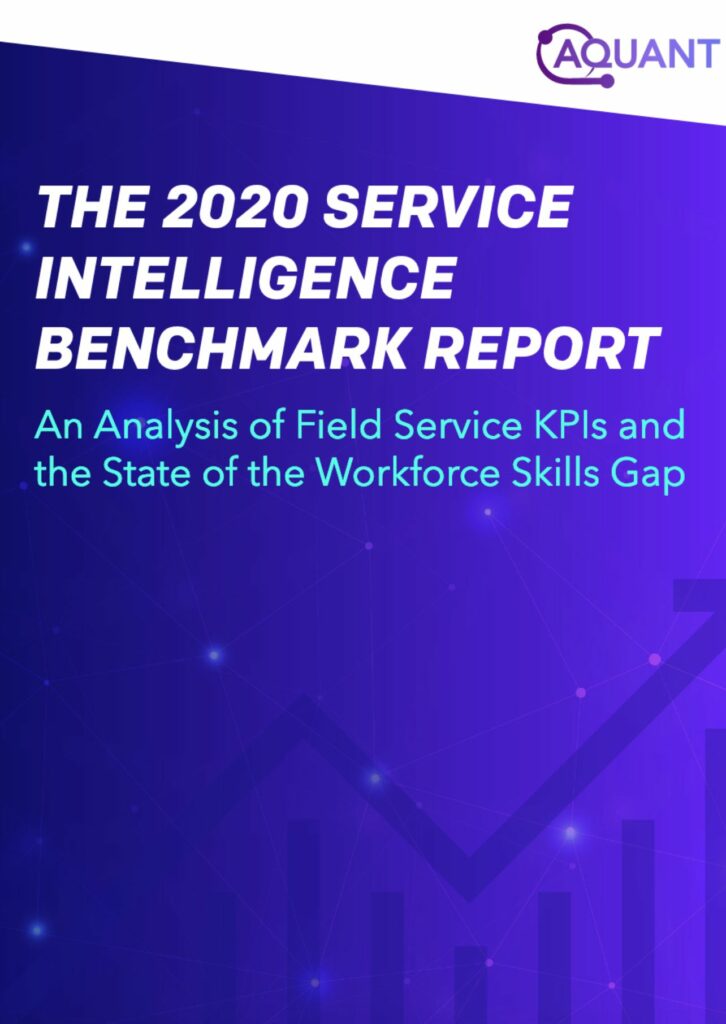What KPI Measurement Does and Doesn’t Tell Us
In a new series of excerpts from a recent white paper published by Aquant we uncover how field service organisations and their workforce (really) measure up, and provide an analysis of how to use hidden KPI data to cut service costs and improve delivery…
WHAT KPI MEASUREMENT DOES AND DOESN’T TELL US
In our first ebook in the Service Leader’s Measurement Series, The Service Leader’s Guide to Workforce KPIs, we examined why workforce measurement is even more critical right now than in the past.
The big shifts across the industry, workforce demographics and customer demands require a skilled-up workforce of high performers. To develop the dream team, organizations need to map out the workforce for a deeper understanding of workforce experts versus challengers and then plot a plan for success.
We also outlined better ways to think about measurement (in an ecosystem versus a vacuum), detailed the KPIs that matter most, and how to most effectively measure them. Now that we know what and how to measure, let’s dive deeper into what industry KPIs look like today, and how that information can be used to address workforce challenges across the entire workforce.
Industry Snapshot: Service KPIs by the Numbers
Here’s the breakdown of how service organizations measure up against other organizations and the industry as a whole.
FTFR – FIRST TIME FIX RATE:
What is It? First time fix rate is one of the most popular metrics for workforce measurement. It’s simply how often someone is able to fix the issue in question on the first try. In this report we are measuring the FTF of field visits, viewed in a 30-day window.
Key Observations:
The good news is that if your FTF rate is around 75% then you fall solidly within the average rate of most service organizations. Previous self-reported data about FTF rates shows 75% is the industry standard. The less great news is that the rate has remained steady for over a decade. In addition, FTF isn’t the best way to measure success.
CPS – COST PER SUCCESS:
What is It? Cost per success is the total dollar amount required to successfully close a service ticket. This differs from other similar KPIs, including Cost Per Truck Roll, as the total CPS may include multiple visits, multiple truck rolls, a variety of parts, and other assorted labor costs.
What It’s Not: While some organizations measure cost per work order, that metric leaves out many common workarounds, like always assigning seasoned experts to the most complex (and expensive) jobs. And it also fails to take into account when multiple work orders are related to the same core issue.
Key Observation:
Successfully resolving an issue involves 25% more in costs versus looking at work orders individually.
MTTR – MEAN TIME ON RESOLUTION:
What is It? Mean time to resolution refers to the time it takes to resolve a customer issue. This is typically defined as the time between the case creation date and its closure date. Similar to the pain of staying on hold when trying to resolve a personal issue, minimizing MTTR is a key factor in increasing positive customer experiences and reducing service costs.
MTBF – MEAN TIME BETWEEN FAILURES:
What is It? Mean time between failures measures the average time between customer issues. The goal for service organizations is to maximize this metric because a high time between failures represents high service quality and maximum uptime.
Key Observation:
While different equipment has different life cycles, service leaders should understand if there are patterns in equipment or within the workforce. Longer-tenured service heroes know how to take advantage of time in front of an asset to ensure that everything is working properly — which can significantly extend the time between failures.
MTBV- MEAN TIME BETWEEN VISITS:
What is It? Mean time between visits measures every visit you have for an asset or customer, instead of only tracking time between failures. This approach allows an organization to measure both uptime and service performance.
Key Observation:
Service heroes will skew towards longer time intervals between visits (and that’s a good thing) due to these two factors:
- They have a lower repeat visit rate
- They know how to best utilize every visit to maximize customer uptime
Look out for the next feature in this series coming next week where we explore three more key technologies required for remote service delivery.
This white paper is currently available exclusively to all FSN PRO members. Subscribe today to have instant access our industry-leading library with over 130 resources, 70+ hours of in-depth conversation and our FSN Education Masterclass courses.

![]() Data usage note: By accessing this content you consent to the contact details submitted when you registered as a subscriber to fieldservicenews.com to be shared with the listed sponsor of this premium content Aquant who may contact you for legitimate business reasons to discuss the content of this white paper.
Data usage note: By accessing this content you consent to the contact details submitted when you registered as a subscriber to fieldservicenews.com to be shared with the listed sponsor of this premium content Aquant who may contact you for legitimate business reasons to discuss the content of this white paper.


